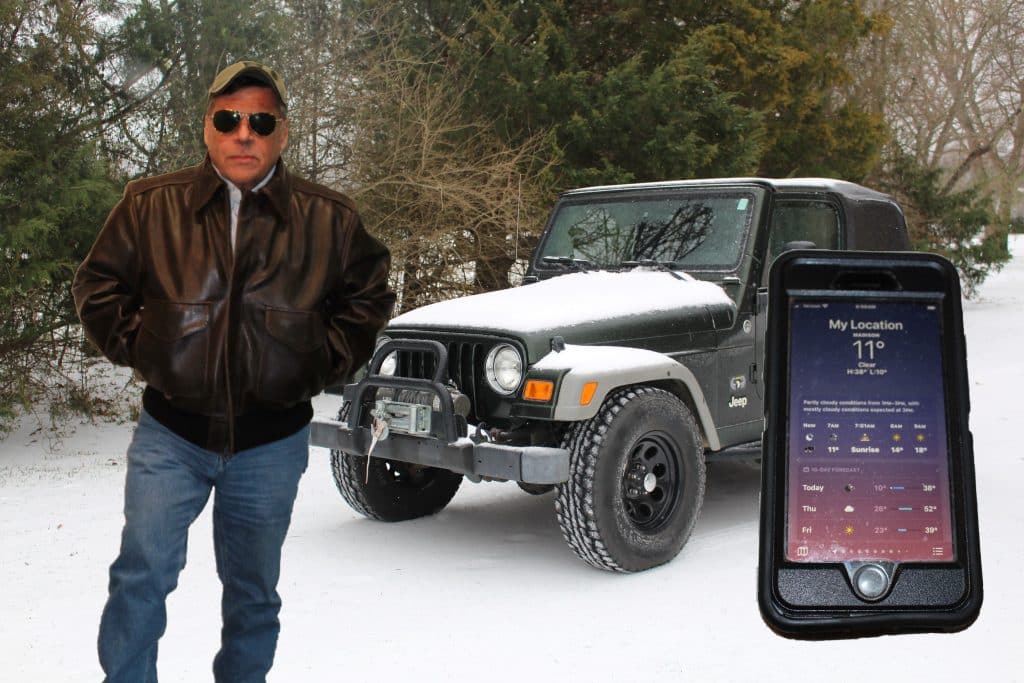THE SPORTS PAGE for LIFE
THE QATSPY® Quapaw Avid Tailgate Sports & Performance Reporter

By: Charles W. Boatright, President of THE QATSPY®
E-Vehicles in Extreme Weather Conditions– 40% Inefficiencies of E-Vehicle in Extreme COLD Weather is Limited by inability to Charge or Jump. You just can’t pop the hood on your EV and get a set of jumper cables that jumpstart your Vehicle.
I had over 5- Decades of driving in the Ozarks near Nixa, Missouri where winters are tough on 12 Volt batter in my truck and Jeep that I used to go to school, work, and work on the farm. It wasn’t uncommon to have record low temperatures below 0 and record snowfall up to 24- inches.
I have had to jumpstart my tractor, Jeep, and truck on numerous of occasions out on the farm, highways, and backroads. If you didn’t have the option to jumpstart your internal combustible engine, you would have a long hike ahead of you to the nearest landline phone to call to have a jump. Jumper cables were a must with every vehicle out on the farm.
Occasionally, you had to replace the 12 Volt battery because of age or a dead cell that will still power your headlights, but can’t turn over your vehicle. For a high school student that worked and went to school that was expensive to replace a 12 Volts battery. During the late 70’s that would run you about $65.00 for a 12 Volt battery replacement.
Options You Don’t have with an E-Vehicle
With an E-Vehicle under these extreme weather conditions that I just mentioned, we even in the deep south experience lows in the signal-digits and snowfall up to 24- inches. The options you have with an internal combustible engine is that you are able to jumpstart your vehicle out on the road or parking lot and if necessary replace your 12 Volt Battery for under $125.00. That isn’t available to you with your E-Vehicles, GUYS.
I guess you can call John Kerry or the Biden Administration and get instructions on how to jumpstart your E-Vehicle.
The other issue is that the efficiency of your E-Vehicle is reduced up to 40% under the weather conditions and demands you are placing on the E-Vehicles batteries. Especially in the northern States with these COLD weather conditions.
Even with today’s modern-day technology, batteries still operate under the same premise where you have to recharge them at charging stations, instead of using the vehicle’s alternator/generator systems. In the event that you have 5- years on the E-Vehicle battery, you can experience a dead cell or a total battery failure. That’s NOT CHEAP!
The Cost of a E-Vehicle Battery
When you bought a use vehicle 5- years ago, you didn’t asked how old the battery was, well with a E-Vehicle you do now!
If you have a dead cell or a total battery failure on an internal combustible engine vehicle, you are looking at the $135.00 price tag for a 12 Volt battery. But with a EV, you’re looking at a minimum of $23,000.00 for a battery replacement. And you just can’t run down to your local NAPA parts store and pick up an E-Vehicle battery pack. Those batteries used minerals that are mined from Africa where slave labor is used to mine these materials by children labor.
THANKS, BUT NO THANKS! I will be sticking with my internal combustible engine vehicles Truck and Jeep, until we see a tremendous advancement in the next generation vehicles that are more dependable and have low maintenance cost that doesn’t place a burden on the electric grid.
One gentleman at a charging station up north reported to the local news station that he had a complete lot of dead robots, EV’s. People had to go a rent a gas burner to get where they were going!

I’ve been an Engineer for 33- years in the energy industry, before retiring. I understand the power flow over a grid, generation capacity, and the limitation of batteries that we have in substations. When I designed, constructed, and maintained transmission lines, maintenance cost and reliability were major concerns. Engineers are trained to think that way!
